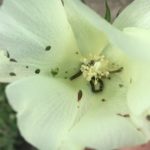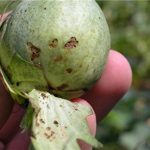Many fields are now well at or past cutout (< NAWF5), and some folks have made or are planning on their last insecticide spray. I wrote last week on the topic of terminating insecticide applications, for plant bugs in particular. Below are a few other points for consideration.
- Applications for plant bugs can typically be terminated about 300 DD60s after a field has reached cutout. This normally takes 14-16 days.
- Applications for bollworm, fall armyworm, stink bugs and spider mites may be needed for another 7-10 days after this point.
- Tank mixes are often suggested at this point of the season to ‘clean up’ a complex of pests. My favorite recommendation in Acephate (0.67-0.75 lb) plus a full shot of a pyrethroid insecticide. Bidrin is a good substitute for the Acephate as well. These are not great choices for spider mites but are otherwise pretty good at cleaning up a combination of plant bugs, stink bugs and bollworms.
- Some areas are reporting an unusually large number of fall armyworms. I suggest tank mixing Diamond (6 oz) where fall armyworms are showing up in concerning numbers. Diamond provides good residual control of fall armyworm. Consider mixing it with a pyrethroid where bollworms are in the mix. Acephate would be a better choice if targeting fall armyworms and plant bugs.
Reminder #1 – UT recommends treatment for fall armyworms when four or more larvae are found in 100 blooms and/or bolls or when 10-20 larvae are found per 100 plants. They can be easy to miss if you are not checking white and pink blooms or behind the bracts of medium sized or larger bolls. A tip off that you are dealing with fall armyworm (and not bollworm) is the presence of bract feeding and feeding scars on the sides of bolls. Also, think fall armyworm if you are regularly finding multiple larvae in flowers (see below).
Reminder #2 – Expect more potential problems with fall armyworm in Bollgard II cotton than WideStrike. Indeed, this is probably one reason I’m hearing more about fall armyworms this year (because we have more Bollgard II cotton). Although there is some concern about fall armyworm resistance to the Cry 1F Bt toxin in WideStrike, experience in Tennessee indicates that WideStrike provides better control of this pests than Bollgard II.
FAW in blooms (coutesy of James Griffen) Bract feeding and scarred boll form fall armyworm



